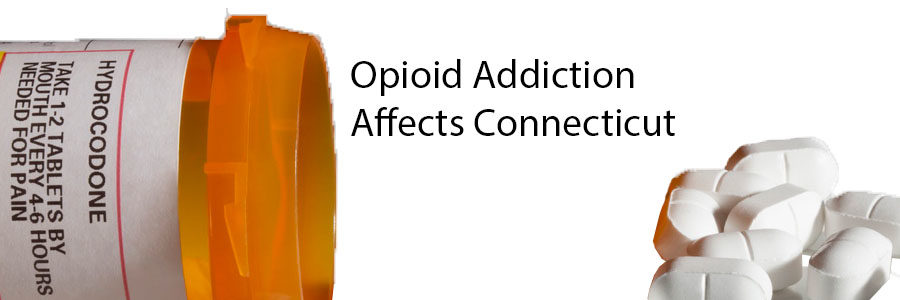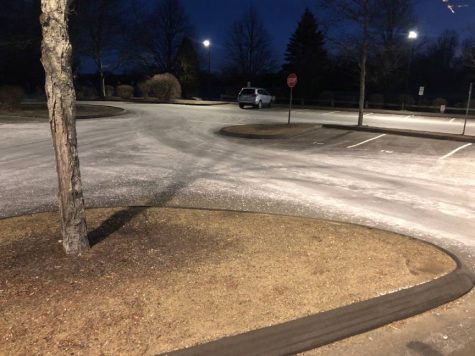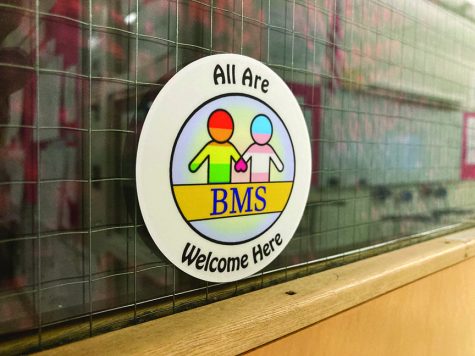Struggling with a Problem
“Young people don’t really seem to understand how dangerous opioids are.”
It’s practically impossible to turn on the news without seeing stories about the epidemic of deaths attributed to the opioid addiction. Although the epidemic surrounding opioids can seem unrelated to daily life in, addiction problems occur right here in Westport.
According to the National Institute of Drug Abuse, opioids are a class of drugs that include the illegal drug heroin, synthetic opioids such as fentanyl, and pain relievers that are legally available by prescription such as Ox
“The opioid addiction can start with other drugs. Then over the years [individuals] start trying other things, and opioids and become a problem.”
— Ms Samantha Porter, Bedford school nurse
Opioids are generally prescribed when an individual has just undergone a serious injury, surgery, or extensive treatment for cancer. These drugs have been chemically manufactured to mimic the effect of endorphins, which are chemicals that our body produces in order to naturally relieve pain.
As opioid education is continually stressed throughout school health classes, these questions still remain: How much do students know about opioids, and how are health experts broadening students’ knowledge about them?
In 2016, multiple cities and towns across the state of Connecticut housed residents who died from an opioid overdose. The areas who lost the most inhabitants to opioids were Hartford, with 62 residents dying from an opioid overdose and Bridgeport with 44 residents dying from an opioid overdose.
Opioids aren’t always dangerous. For the majority of people, when opioids are prescribed by a professional for a short amount of time, they are relatively safe and can effectively reduce pain. However, there are certain people who develop a dependence on opioids and experience withdrawal symptoms when they aren’t on the drug. According to American addiction centers, addicts may experience flu-like symptoms 24 to 48 hours after withdrawal.
The number of prescriptions given out for opioids in the United States has skyrocketed within the last 25 years. In 1991, there were about 76 million prescriptions for opioids in the United States, as opposed to the 207 million prescriptions given out in 2013.
“The opioid addiction can start with other drugs. Then over the years [individuals] start trying other things, and opioids and become a problem,” said Ms. Samantha Porter, a Bedford nurse and EMT.
Ms. Porter also confirms that addiction to opioids can begin at a young age. “Although it may not seem like it, the opioid addiction absolutely affects young people. I’ve had many experiences with people in their 20s dealing with the addiction. It does generally affect older people more, but young people are still affected by it.”
Melissa Fett, a health teacher at Bedford, agrees that opioid addiction within teens is a problem. “Young people don’t really seem to understand how dangerous opioids are. So many adolescents think that just because they didn’t buy the drugs off of the street from a drug dealer that they aren’t ‘doing drugs.’ They seem to believe that since the medicine was prescribed by a doctor and that it is in their medicine cabinet at home that it isn’t so bad. This way of thinking is extremely dangerous not only because it makes young people think it is okay to use opioids, but also because they are then more likely to end up abusing the drugs.”
Ms. Porter, said, “The main problem surrounding the opioid addiction is the over prescribing of opioids at hospitals for pain management.”
Since opioids are so addictive and potentially life-threatening, medical professionals are looking for ways to avoid prescribing opioids. Ms. Fett says, “Doctors could be a bit more selective of whom and how often opioids are prescribed. For example, it makes sense that a person who just had surgery is taking opioids for a few days. However, if that same patient is still in great pain months later and claims to need the more medication in order to function, then perhaps doctors should take a closer look to see what is truly going on with that patient. Continuing to medicate him or her is not going to solve anything, but it will increase the chances of becoming addicted or overdosing.”
It isn’t just doctors and patients who need education about the addictive traits of opioids. Ms. Porter suggests that a potential solution to the opioid epidemic is, “Continued education for young people and being aware of what you’re taking for pain management when you need it.”
Ms. Fett agrees that education about opioids is important for young people to receive. “Reducing the amount of prescriptions (and intensity of dosage) would be the simple answer, but unfortunately, it isn’t that easy. However, educating people, especially those who are being prescribed opioids, about the dangers of prolonged use of the drugs is critical. When people know and understand the dangers of abusing or overdosing on opioids, they have a better chance of being more aware of how to properly take the medication.”














Nina Lauterbach • Mar 6, 2018 at 11:03 am
This article was really informative about opioids. I had heard about some drug addiction problem but I didn´t know any further details. I think you did a good job of presenting the information so it didn´t scare us, but made sure we knew what was going on.
Sarah McCourt • Mar 6, 2018 at 8:49 am
I think that the teens should get a smaller proportion because they may not realise it’s “taking drugs”. according to Ms. Fett, the teens may not understand that an overdose of opiods prescirbed from a doctor is just as wrong as getting them off the street (if they werent messed with.)
mason • Mar 6, 2018 at 8:33 am
i like how kids are adressing other kids about this problem
mason • Mar 6, 2018 at 8:28 am
I knew about the opioid crisis via the nightly news my family watches, but I did not realize this problem was existent and deadly in Connecticut as well. that was a shocker
Devon Denkin • Feb 15, 2018 at 2:27 pm
I knew about the opioid crisis via the nightly news my family watches, but I did not realize this problem was also existent and deadly in Connecticut as well. This article helped to broaden my knowledge on the opioid crisis, and I believe it is crucial to learn about opioids. This article was quite helpful to me.
Devon Denkin • Feb 15, 2018 at 2:28 pm
I knew about the opioid crisis via the nightly news my family watches, but I did not realize this problem was existent and deadly in Connecticut as well. This article helped to broaden my knowledge on the opioid crisis, and I believe it is crucial to learn about opioids. This article was quite helpful to me.
(Corrected Version)
Chloe Francis • Feb 15, 2018 at 12:22 pm
This is a great article. Before I read this article I had no idea what opioids were, and I think you brought attention to the opioids in the perfect way. I think that you should do a different article like this to bring attention to things you don’t really know about.
Chelsey • Feb 15, 2018 at 10:45 am
I think this is great because it lets people know how the drugs you use to clam your pain is also the same drug that people use on the streets
Justin Zames • Feb 15, 2018 at 10:03 am
I learned a lot about the opioid epidemic. I never knew that it was a problem in connecticut and I found is interesting how more have been prescribed since the late 1900’s
Gideon Rotem • Feb 15, 2018 at 9:51 am
I agree with this article. Drugs should not be used for addiction. Drugs should be a short limitation span of time. This means that children should be taught thoroughly not to even think about inserting the poison into the human body.
Tommy Dry • Feb 15, 2018 at 9:48 am
If opioids are so bad, why don’t we sell them in small quantities and make sure nobody buys too many.
Will Phillips • Feb 15, 2018 at 9:24 am
I believe Opioids Are really effect the way people function in there daily addiction needs to be stopped!
Monty Goldberg • Feb 15, 2018 at 9:24 am
I agree that younger children should be exposed to other consequences of drugs so they know not to take them in their future
Luke Thumser • Feb 14, 2018 at 1:58 pm
I think it’s great that you are teaching about a problem throughout the state. Anyone who read this would know to ovoid opioids unless a doctor told you to take them. I hope Ursus keeps writing articles like this.
Cooper Levinson • Feb 14, 2018 at 1:53 pm
I agree with you about opioids they are a drug that no one pays attention to and you were right to bring up the topic. Young teens should know how to deal with situations like these and they are a dangerous threat to our community.
Katelyn Bouchard • Feb 14, 2018 at 1:47 pm
I think that drug addiction is very important to learn about, so when kids are older they can have smaller chance to get addicted.
Aiden Shcachter • Feb 14, 2018 at 1:32 pm
I think having Articles that speak about current events. It teaches and informs everybody about what is happening in the surrounding world. I really learned a lot with this article. It was great. I’d loved to see more articles like this!